One of the amazing things about the Coastal Sage Scrub plant community out at Cabrillo National Monument is the ever-changing species that are in bloom. Each of these species has a specific phenology, or specific seasonal changes that occur that occur in plants from year to year--such as flowering--especially their timing and relationship with weather and climate. Such is the case for the Coyote Brush (Baccharis pilularis) and Broom Baccharis (Baccharis sarothoides) as they go through their seasonal blooming. However, the Hybrid Desertbroom (Baccharis sarothroides x pilularis) is a mix of both species and one of the fall blooming plants within the Coastal Sage Scrub here at Cabrillo National Monument.
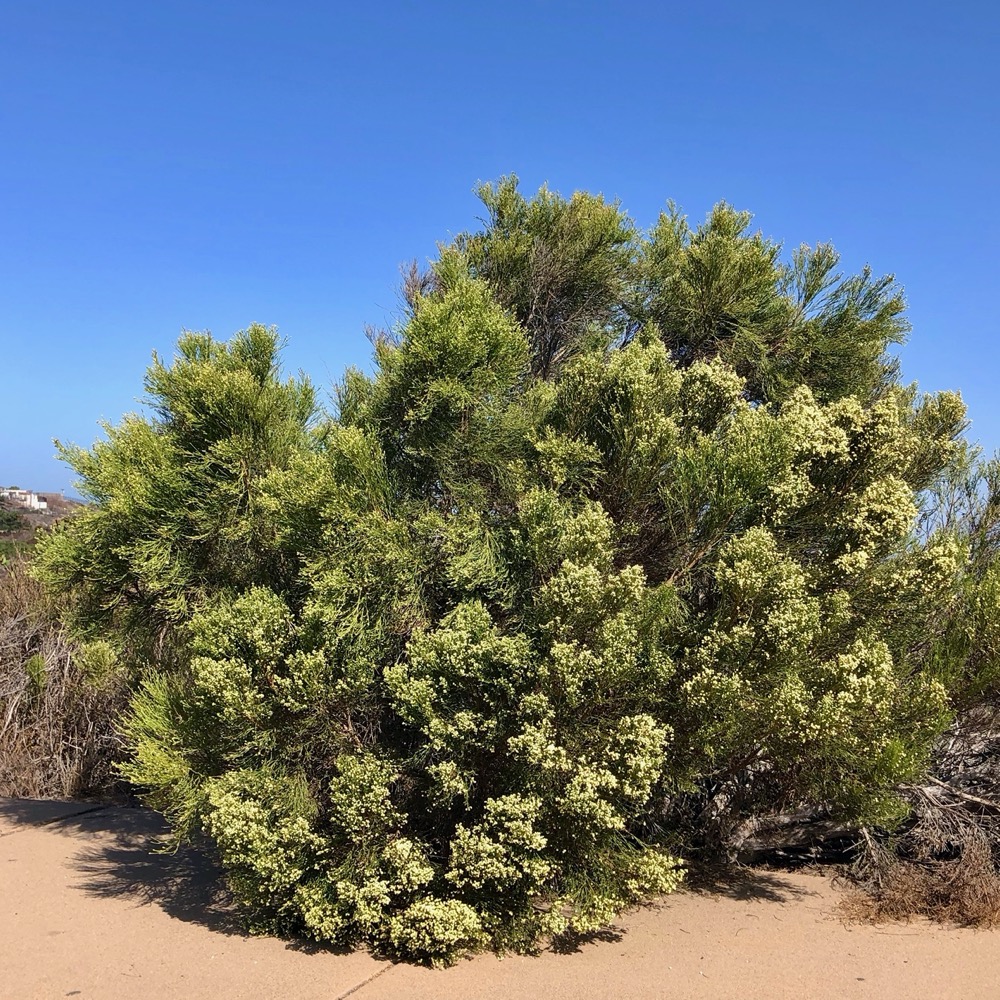 NPS Photo/Andrew Rosales – A mature Broom Baccharis along the edge of a path.
NPS Photo/Andrew Rosales – A mature Broom Baccharis along the edge of a path.
This Baccharis is an erect shrub that generally grows smaller than 3 meters (9.8 ft). The stems can be prostrate or erect, with branches spreading or ascending. The small wax-covered, drought resistant, and fire retardant leaves are 8–55 millimeters (0.31–2.17 in) long with three principle veins. The branches look like a broom or brush, with the fuller leafy end of the stems at the top of the leggy lower branch.
The plant is dioecious, meaning the pistillate (female) flowers and the staminate (male) flowers are on separate plants. The blooms of the female flowers are long whitish green and after pollination create a fluffy tuft, or pappus containing the seed nutlet. This adaptation helps spread the seeds when the wind picks up and some days it resembles snow falling down the canyons.
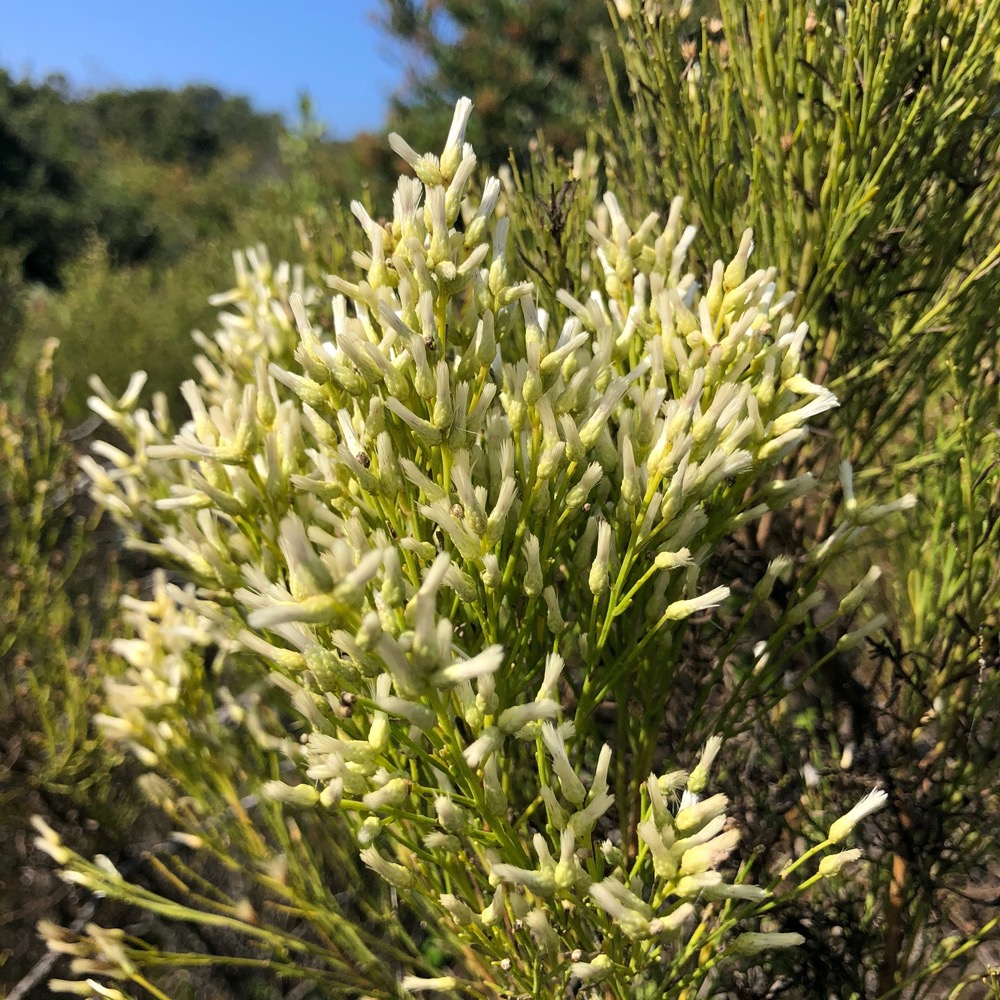 NPS Photo/Andrew Rosales – A cluster of female flowers.
NPS Photo/Andrew Rosales – A cluster of female flowers.
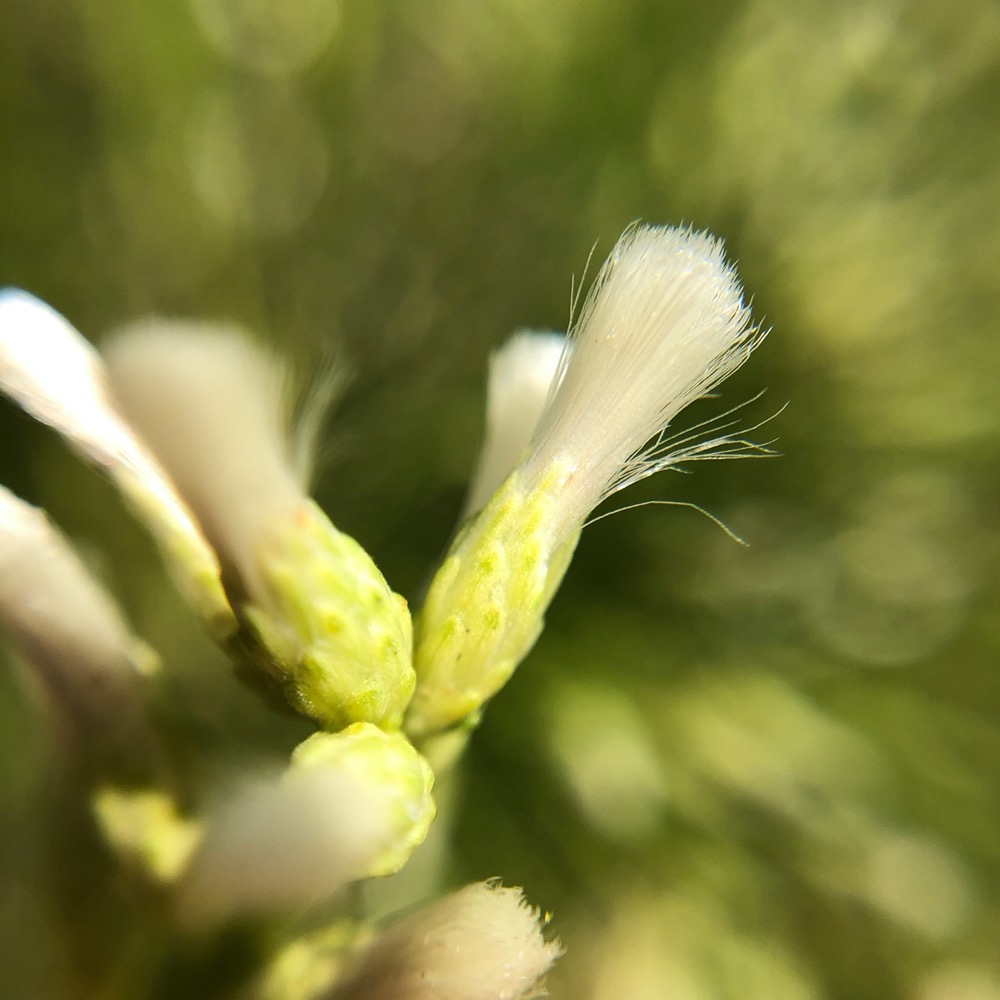 NPS Photo/Andrew Rosales – Close-up of female flowers.
NPS Photo/Andrew Rosales – Close-up of female flowers.
The male plants have sterile female parts in their flower. The male flowers contain the yellow pollen and some state they have the scent of shaving soap. The blooming season is approximately between September and January.
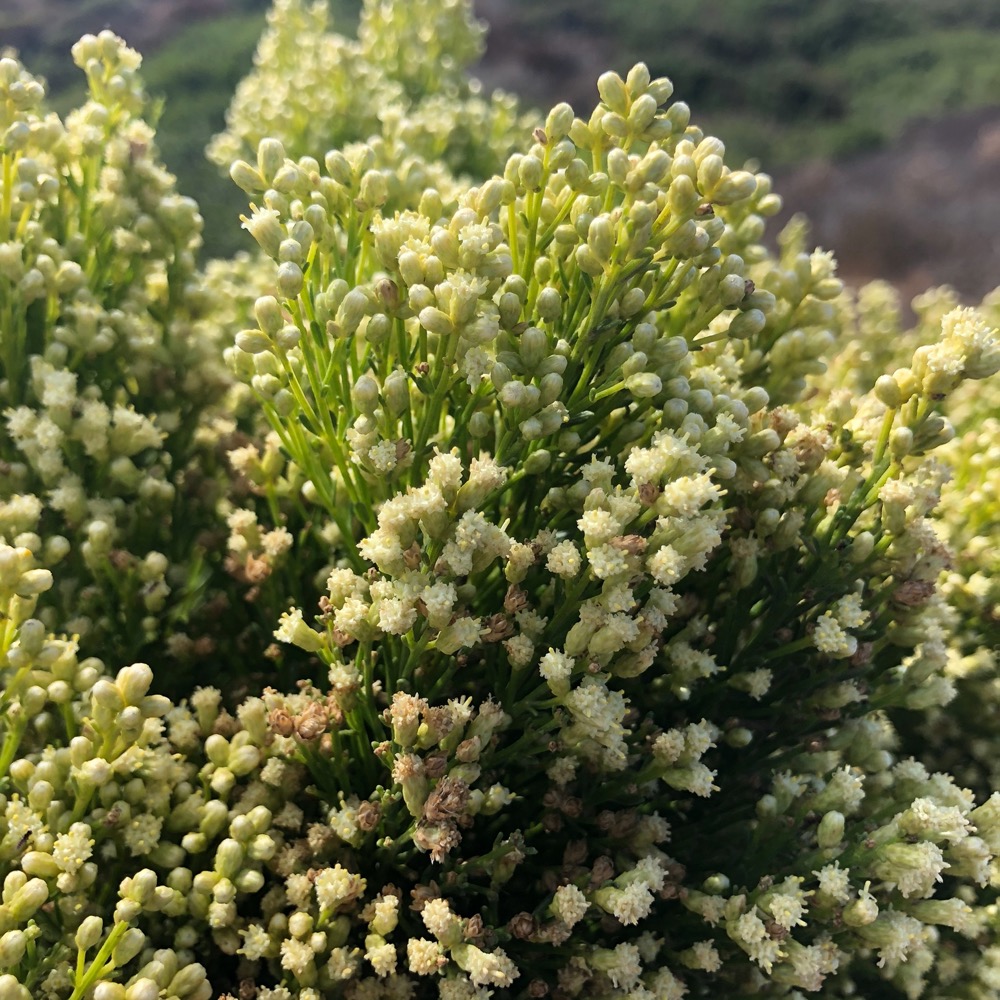 NPS Photo/Andrew Rosales – A cluster of male buds and open flowers .
NPS Photo/Andrew Rosales – A cluster of male buds and open flowers .
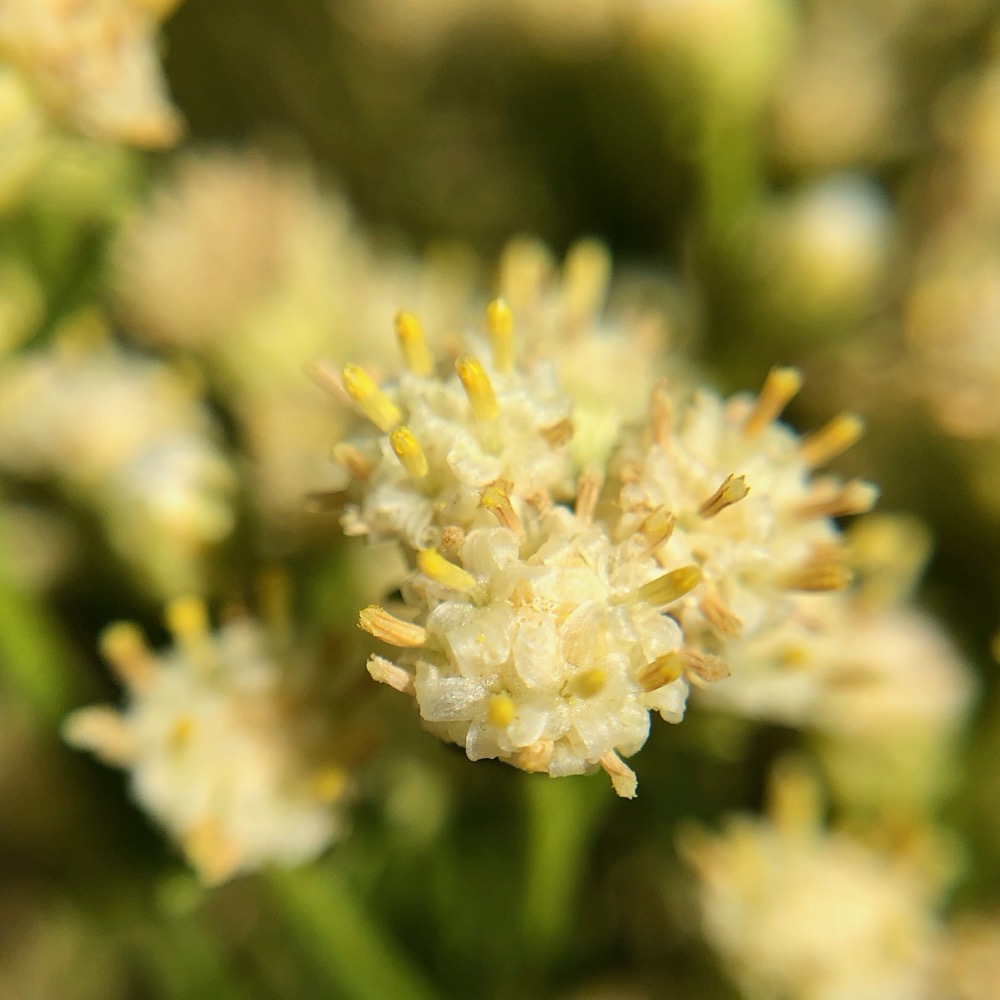 NPS Photo/Andrew Rosales – Close-up of male flowers.
NPS Photo/Andrew Rosales – Close-up of male flowers.
Another adaptation is the shallow root system that extends many yards from the plant’s base to collect any rain or moisture that may accumulate due to fog. This aids in gathering critical moisture for survival. Because of this dense root crown, the Hybrid Desertbroom, like other Baccharis, can regenerate after floods and fires. The latter is rare for the park.
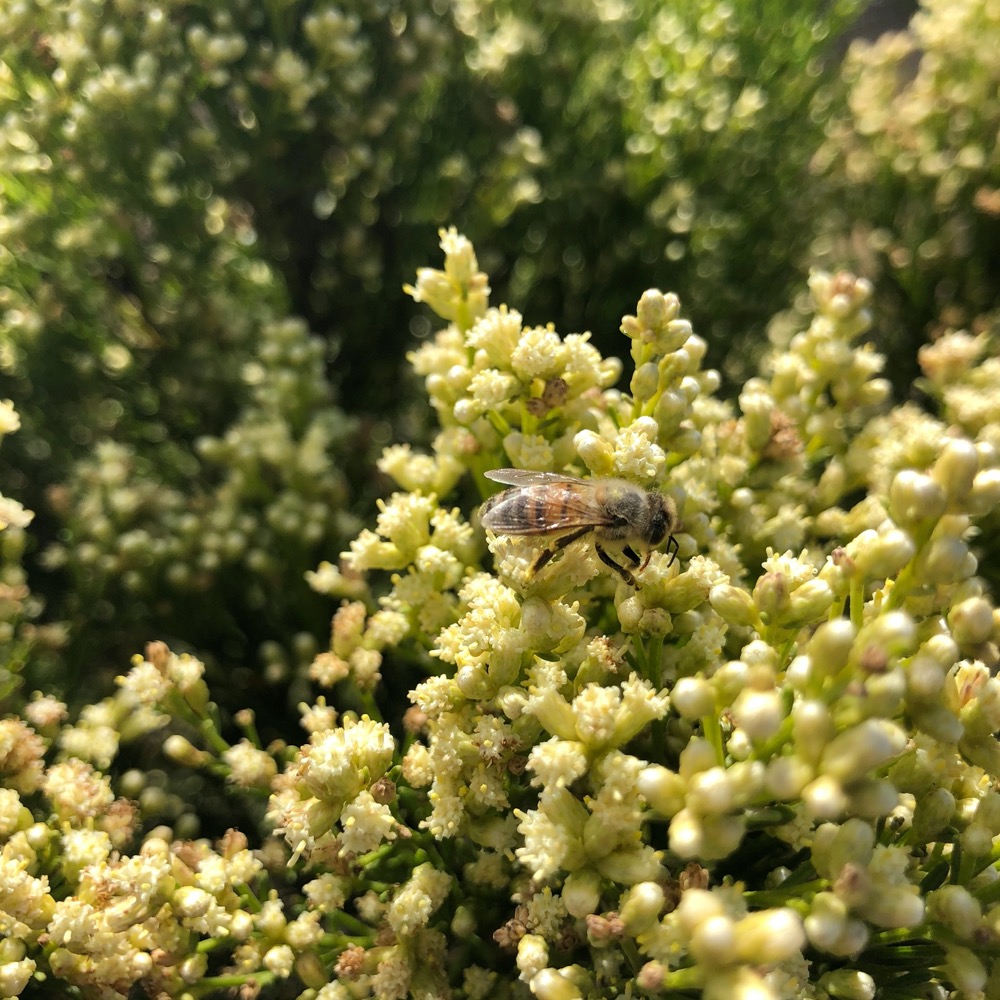 NPS Photo/Andrew Rosales – A cluster of male flowers with pollinator.
NPS Photo/Andrew Rosales – A cluster of male flowers with pollinator.
As you stroll through the park in the coming weeks and months, look out for this special plant that calls Cabrillo National Monument home. Soon the seeds will be spilling out as they are nudged from their resting places by the afternoon winds coming off of the Pacific.
|
October 22, 2019
|
Last updated: October 22, 2019
